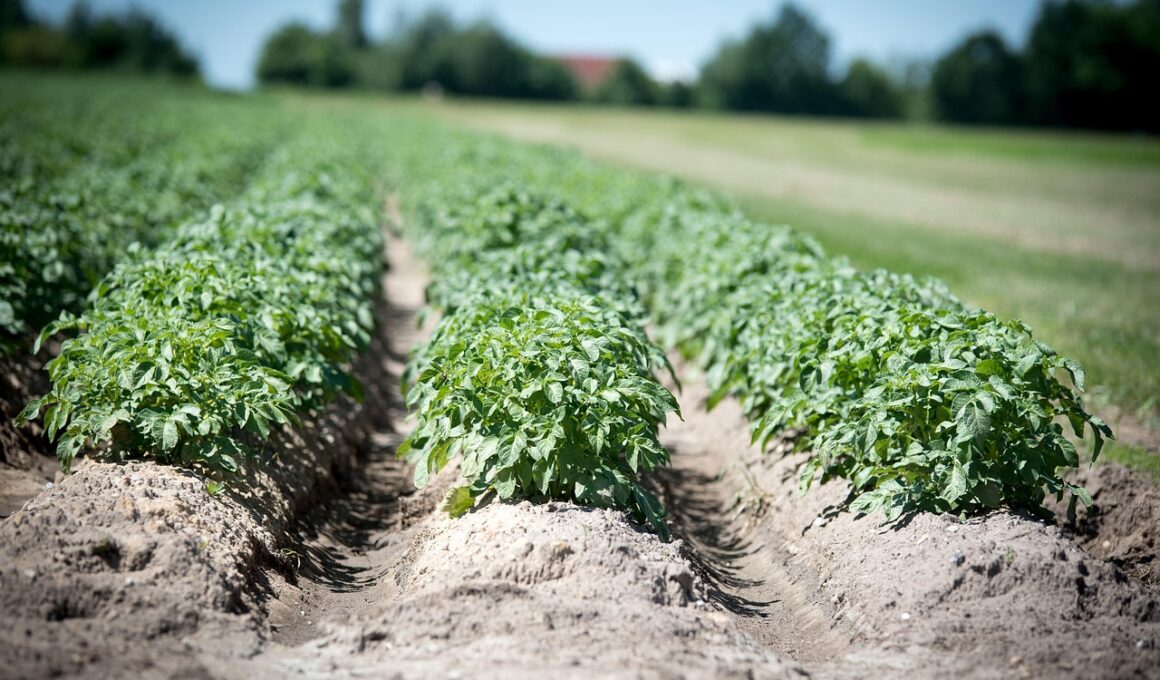Government Crop Insurance Programs: Benefits and Eligibility
Government crop insurance programs are vital for farmers, providing financial protection against crop losses due to unforeseen events. These insurance plans cover a variety of risks including natural disasters like droughts, floods, and pests that may severely affect harvests. With these programs, farmers can minimize financial stress and secure their livelihoods. Participating in such programs not only stabilizes farmers’ income but also encourages agricultural sustainability. Often, policies are subsidized by federal or state governments, enabling farmers to afford coverage. This makes crop insurance an attractive option, especially for those with limited capital. Many farmers are now aware that they can mitigate risks associated with extreme weather conditions and market fluctuations through insurance. Addressing the concerns of eligibility, it varies depending on state and program specifications. Most require farmers to provide production records and adhere to guidelines concerning the crops they plant. Additionally, education and outreach programs assist farmers in understanding the importance and functionality of crop insurance, promoting wider adoption. Ultimately, the goal is to safeguard food production and promote stability in the agricultural sector, a cornerstone of many economies.
Benefits of Crop Insurance
The benefits of crop insurance extend beyond mere financial protection. By enrolling in crop insurance programs, farmers gain peace of mind knowing that their investments are safeguarded against unpredictable losses. This sense of security allows them to pursue more productive farming practices, such as investing in new technology or sustainable farming methods. With insurance, farmers are more likely to take calculated risks that could lead to higher yields, thus promoting innovation within the agricultural community. Crops are subject to a variety of threats, and having insurance ensures that farmers won’t lose everything due to a single bad season. Federal crop insurance programs may offer tailored options to meet varying agricultural needs, allowing farmers to select coverage that aligns with their specific crops and regions. Furthermore, these programs can improve access to credit from financial institutions, as lenders are often more willing to offer loans to insured farmers. This financial leverage can help farmers grow their operations and improve overall productivity. Overall, the benefits provided by crop insurance are multi-faceted, positively impacting individual farmers and the agricultural economy.
Understanding eligibility criteria for government crop insurance programs is crucial for farmers looking to protect their investments. Generally, to qualify for such programs, farmers must demonstrate a vested interest in production agriculture. This can include a requirement that the crop must be planted for commercial purposes. Furthermore, eligibility often hinges on the farmer having a history of producing a specific crop or sufficient records of past productions and yields. Farmers are typically required to report their acreage, planting dates, and expected production levels to determine premium amounts. Other factors influencing eligibility include the farmer’s compliance with conservation guidelines and maintaining accurate records of their farming operations. Moreover, they need to meet application deadlines set by the USDA or relevant agricultural authorities, demonstrating timeliness and diligence. In some instances, state-level programs may have additional or more specific criteria that farmers need to adhere to, which necessitates thorough research. Resources such as local agricultural extension offices can be invaluable for farmers seeking detailed information about eligibility requirements. Proper understanding can empower farmers to choose the right insurance products for their situations.
Types of Crop Insurance
There are primarily two types of crop insurance available: Actual Production History (APH) policies and Revenue Protection (RP) policies. APH insurance is designed to protect farmers against yield losses based on their past production history. Essentially, this type of insurance guarantees a minimum yield, ensuring that farmers can recover a portion of their losses. Meanwhile, Revenue Protection policies provide coverage against income losses resulting from lower yields or reduced prices. This type of insurance enables farmers to protect their revenue rather than just yield, which can be crucial during market fluctuations. Additionally, some specialized insurance programs exist for specific crops like cotton or specialty fruits, offering tailored coverage options. Farmers should examine both options carefully to determine what best fits their risk exposure and financial goals. Enrollment periods and specific crop selection can significantly influence available options for farmers. Understanding local market conditions and historical performance can guide farmers in selecting the most suitable insurance policy. Resources are available via the USDA website and local agricultural agencies to assist farmers in understanding their options.
It’s essential to consider the costs associated with government crop insurance programs, as expenses can vary widely based on several factors. Premium rates are influenced by the type of crop, historical yields, climate, and location. Additionally, federal subsidies can significantly reduce the overall cost, making crop insurance more affordable for farmers. Farmers might choose to pay premiums annually or choose multiple-year options, depending on financial strategies and cash flow. Deductibles and coverage levels play a significant role in determining overall expenses as well. Furthermore, understanding the claims process and potential pitfalls can help farmers navigate costs efficiently. Resources, like local agricultural service providers, offer workshops educating farmers about financial planning related to crop insurance. Clarifying these costs upfront helps farmers to budget effectively while avoiding unexpected financial burdens during the growing season. Having a well-informed financial strategy that includes crop insurance can lead to greater profitability and sustainability in their farming operations. Overall, evaluating the economics of crop insurance is fundamental for informed decision-making in risk management.
The Application Process
The application process for crop insurance involves several steps, beginning with understanding eligibility requirements and selecting suitable coverage options. Farmers should gather necessary documents recording their production history and acreage. Subsequently, they must complete an application before a specific deadline outlined by the insurance agencies or USDA. Typically, applications can be submitted online, through local agricultural offices, or via the insurance agent. Once submitted, applications are reviewed for accuracy, with possible adjustments required before final acceptance. Post-approval, the policy terms must be understood to ensure compliance with all procedural elements. Farmers may also participate in outreach programs focused on educating them about maximizing their insurance benefits. Keeping current records throughout the growing season helps facilitate the claims process in case of yield loss or damage. It’s also advisable for farmers to communicate with their insurance agents regularly to discuss any changes in farming practices or crop conditions. This ongoing communication can help identify other available resources or programs. Navigating the application process can seem daunting, but utilizing available resources can ease the way.
Lastly, crop insurance programs play a crucial role in strengthening the agricultural sector by promoting resilience among farmers. By mitigating the risk of catastrophic losses, such programs contribute to the overall food security of the nation. When farmers feel secure knowing their crops are protected, they tend to invest more in their land, leading to improved production techniques and sustainability efforts. Successful crop insurance plans not only benefit the individual farmer but also contribute to the economic viability of rural communities. In addition, educational outreach efforts by the USDA and various extensions focus on spreading awareness about these programs. Ensuring that farmers are well-informed enables better participation rates in crop insurance programs, strengthening the agricultural industry. Furthermore, external factors, such as climate change, increase the necessity for robust crop insurance systems. As agriculture continues to adapt to an evolving landscape, government support through these insurance programs ensures that farmers are equipped to face future uncertainties. By prioritizing education and accessibility, partnerships can be formed to improve adoption rates and coverage satisfaction among all agricultural producers.


